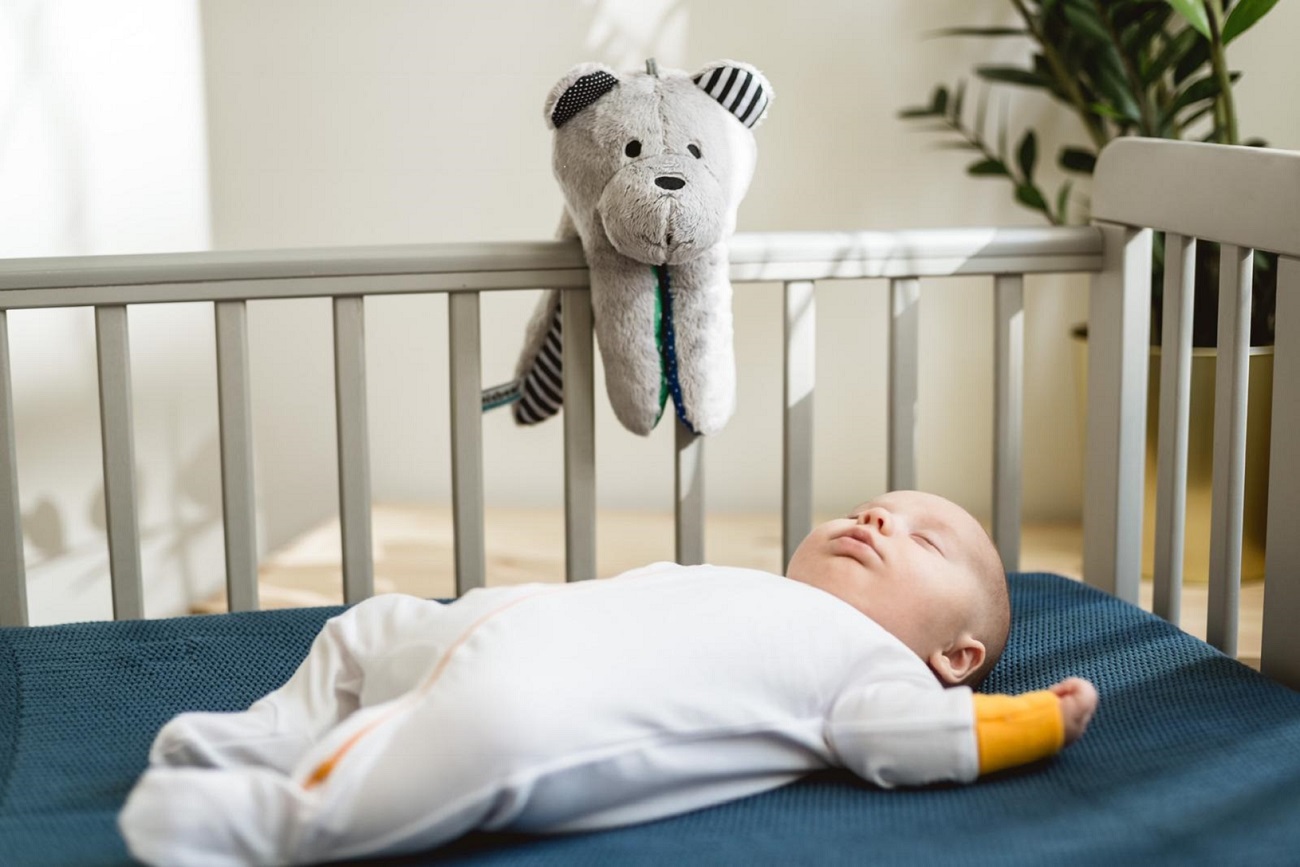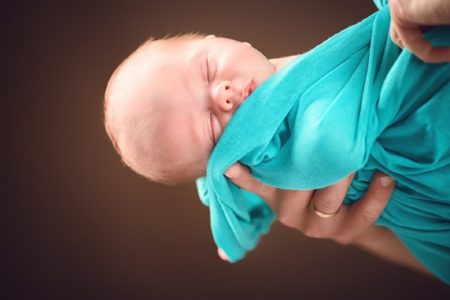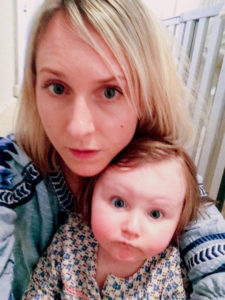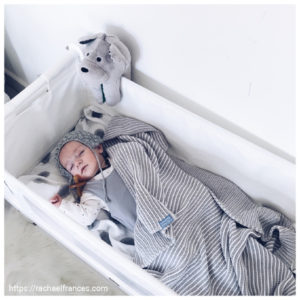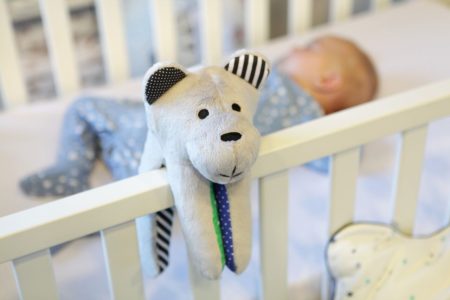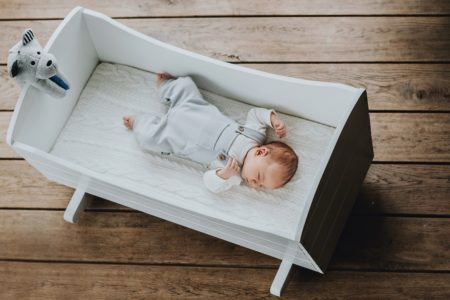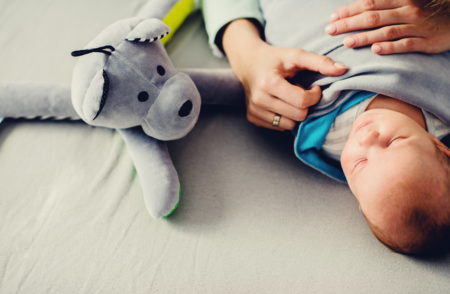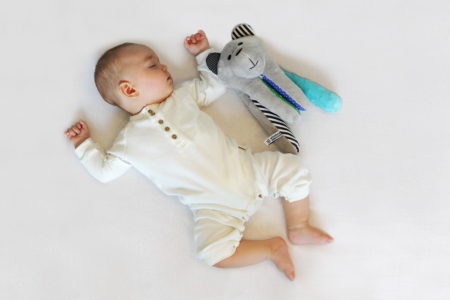Gosia&Marta, experienced Professional Child Sleep Consultants from SleepConcept are sharing with us some safe sleep tips that reduce the risk of SIDS:
Safe sleep in a cot
Being sleep consultants at SleepConcept we share similar mission as Whisbear The Humming Bear, i.e. good and healthy sleep for babies,which enhances their development; therefore, our articles are mainly about sleep quality. However, an important factor for the child to sleep peacefully and without interruption, should, above all, be in line with the safety rules toavoid any unnecessary risks.
We hear a lot of disturbing information that was given to families whom we work with, but also from some doctors and midwives whom we talk to, about how to put the child to sleep and what props and gadgets to use in order to improve their sleep. We discuss most of them below.
1. The child should be put to sleep on their back – FACT
From birth until the end of their first year, we should put our children to sleep on their backs. Sometimes, when they sleep facedown (because this position stops the Moro reflex) their sleep is longer and deeper, but it is also unsafe and increases the risk of SIDS (Sudden Infant Death Syndrome), especially when their carer is not around. After implementing guidelines of the ‘Back to Sleep’ campaign in the United States in 1992, which encouraged parents to have their infants sleep on their backs, the number of SIDS cases drastically declined (by nearly 3 times). We should continue putting babies on their backs throughout their first year, but if a baby turns on their tummy while sleeping, we do not need to change it. After their night feed we put them to sleep on their backs even if they turn on their tummies again a moment later. It is not true that a child on their back is at risk of choking on food they are trying to bring up. Babies have a natural ability to turn their heads sideways while in a situation like this and regurgitate to the side. There is no proof supporting the idea that by putting the baby on their side reduces the risk of choking.
Lying on the back for too long could cause aso-called plagiocephaly, i.e. a flattening/deformation of the head. In order to prevent it, we should not use any type of pillows, because they are dangerous for the baby (more on that below) nor put the baby on one side or the other. The best solution, if you encounter a similar problem, is simply to minimise lying on the back, when the baby is NOT sleeping. Encourage tummy time as much as you can. You can also carry them in a sling or carrier, or minimize using the buggy, when the child is not sleeping.
2. A baby should always have an extra layer ofclothing – MYTH
Overheating is also one of the factors increasing the risk of SIDS amongst babies. Children have their own thermoregulation and instead of following the idea of whether we are warm orcold – we should simply check if the baby is warm. Their cold hands or feet are not an indication that the child is cold. We should check whether their neck orchest is warm. If it is – it means that the baby maintains a good body temperature. Except for the very first 2 – 3 weeks when the thermoregulation is only developing, most children do need additional layers of clothing compared to adults.
Moreover, keep in mind that the temperature in the room where the child sleeps should always be around 16-20°C and you should adapt the child’s clothes to that. Do not use thick bedding to prevent the babyfrom being cold as overheating, besides compromising safety, could be a cause for poorer sleep and increase the risk of having nightmares.
3. I will put a pillow, a blanket and large teddybears into the baby’s cot so that they can feel cosy and thus sleep better –MYTH
Up until the end of the 1st year, children should not have anything in the cot. That applies to pillows, blankets, muslins, loose pyjamas or cot bumpers. Why? Because all these items increase the risk of the baby’s suffocation in the cot. In the United States during the last twenty years the number of SIDS cases have decreased thanks to the campaign ‘Back to Sleep’. Unfortunately, the number of cases of babies dying due to accidental suffocation or entanglement has increased. The parents’ awareness of SIDS is high, but the knowledge about suffocating or entanglement of children is less known, and nowadays, the risk of SIDS is only a bit higher than the accidental death due to these reasons. Therefore, it is worth remembering that a large number of items put in a child’s cot puts them in danger. It is also one of the reasons why putting the child on its side is not recommended as usually, in order for a newborn to maintain such a position, it is necessary to support its back with a rolled towel or a pillow.
The only sleep aids we would recommend are pink noise mascots such as Whisbear The Humming Bear or Sloth E-zzy, which can be safely placed on top of one of the sides of a baby cot by means of internal magnets . A small comfort blanket is also safe as of around 4 months of age.
So, how should a child be covered and what bed-linen should be used? Babies up to 3/4 months (i.e. the moment when they first start rolling over) can be swaddled. If you do not do it or have already stopped swaddling, the only right bed-linen in a baby’s cot is a sleeping bag (or sleeping without a cover, but in thicker pyjamas). You can use the sleeping bag even up to 3 years old, but, in terms of safety, it is most important in the first year. Up until the age of 2, there is really no need to use a pillow. It increases the risk of suffocation and does not have any health benefits. If somewhere between 18 and 24 months of age the child begins to show interest in a pillow, opt for a flat pillow for newborns, and if the child does not request a pillow at all – do not use it for as long as possible. If you use a cuddly toy – consider only small cloth-cuddly toys, ideally made from breathable fabrics.
4. The child could jump out of the cot so I haveto move them quickly into a toddler bed – FACT and MYTH
It is believed that the child should be moved from a cot to a toddler bed as soon as possible. It seems to be a mile stone of growing up and gaining independence – unfortunately, in most cases it rarely improves the quality of sleep not to mention safety. Firstly, a baby sleeping in a bed can get out of it and move around the room or the house while the parents are asleep. Securing all furniture, windows and toys in the child’s room, so that uncontrolled playtime is safe, can be unfeasible. Secondly, in the first years,most children move around a lot in their bed and the chances that they don’t fall out are small. If they fall, they could get a bad bump or a bruise. So, if you can, let your baby sleep in a cot bed for as long as possible. A standard 120×60 cm cot is good even for a tall 3-year-old.
It is worse, if your decision is motivated by the fact that your baby is trying to get out of its cot by climbing over. What to do then? First of all – it happens very rarely, a lot of babies, even 2 or 3-year-olds don’t even think about it, so wait and see if your baby even tries to do it. Secondly, always adapt the height of the mattress in the child’s cot to its growth (and ideally, always be one step ahead). For example, if your baby begins to sit up, it is time to move the mattress to the lowest level, because they can start to stand up at any moment. Never go into the child’s bed over the barrier – if the baby sees that the parent can do that, it’s only a matter of time before they try for themselves. If it is necessary, take the baby out of their cot if you want to hug them or take one side of the bed out so you are able to sleep closer to the baby (e.g. in times of sickness, teething, during separation anxiety phase). As we wrote above, the cot bumpers are not safe because they increase the risk of the child’s entanglement and suffocation. There’s another argument against them, especially thick or pillow like bumpers – babies can use them to climb out of the cot! If you really have to or want to use a bumper, choose a short, thin, breathable one which can be safely installed in the cot (i.e. without any ribbons). And lastly – use sleeping bags.This piece of advice should not be overlooked. The baby sleeping in a sleeping bag will not jump out of the bed because there is no way they can put a leg over the cot. A good quality sleeping bag will normally leave the child’s legs and hips free to move, will allow them to stand in their cot – but will not allow them to do circus-like acrobatics.
More ways that reduce your baby’s risk of SIDS, thus increasing their safety in a cot include:
- Not smoking during pregnancy and during the first months of the child’s life
- Using a pacifier in the baby’sfirst months of life – yes, that’s true!
- Sleeping in the same room as parents (not necessarily in the same bed) for the first 6 months.
We hope that you have learnt something new from this article and that thanks to this knowledge your little ones will be safer and happier.

Gosia Makowska and Marta Bartosiewicz are experienced Child Sleep Consultants. With holistic approach and one to one advice, they help parents solve problems with sleep that their children are struggling with. As mums, they know how much effort needs to be put in to help children sleep well . Their website: https://sleepconcept.co.uk/ e-mail: contact@sleepconcept.co.uk


